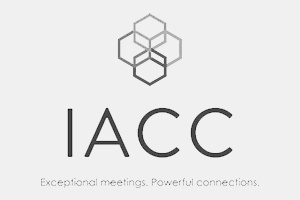Well planned training is the key to finding success in sales. Here’s how to get the most out of your sales training and find techniques that stick.
Hitting targets, consistency and genuinely understanding the customer are key factors that help build successful sales teams. Getting to the root of issues hindering sales, and training your people in tangible and engaging ways, can help to turn sales around.
Find the Gaps
If company sales have flopped, it’s important to get to the heart of why. There’s always room for improvement, so it’s likely that training will help your sales team improve. However, before deciding on a training approach, dig a little deeper to find out why sales have fallen. Look at the product or service and the feedback customers are giving about it. Is it flawed, or does the messaging need to be improved to differentiate it from competitors? Also, take a look at what’s happening in the company more widely. For example, times of change or uncertainty will have an impact on your people. Finding all possible root causes of falling sales helps tangibly address these areas in subsequent sales training.
Really Get to Know the Customer
Consumers are changing and as a result, they demand a different response from sales teams. Customers are savvier, more knowledgeable and are looking for bespoke solutions. Sales teams need to respond to these needs convincingly – detailed product knowledge is not enough. To do this, teams should start by creating customer profiles or personas, with detailed information about different types of customers. This includes information such as what pressures these customers face and how other life experiences determine their buying decisions. Customer personas are also crucial for targeted marketing, further assisting with improved sales and positive brand experiences for customers.

Think About Using an External Facilitator
When it comes to training a sales team, it can be beneficial for an external facilitator to take the lead. External facilitators are unconnected to the business and so don’t have the same attachments to the subject matter as internal staff members might have. This helps retain focus on the training objectives rather than veering into unrelated business matters. If differing opinions arise about why sales aren’t going as well as they could be, an external facilitator can play a neutral role, ensuring opinions are heard and logged, but not dwelled on. A calm, experienced and even-handed external facilitator will focus on the task at hand, helping everyone walk away from a training session feeling better equipped to deliver in their work.
Combine with Experiential Learning
It’s well documented that people learn best by doing, so incorporating experiential learning with other sales training tactics can really reap rewards. This allows participants to practice the skills they learn throughout sales training. It mixes up the day with activity, so sales training is not all about passive learning and presentations, allowing your people to test out the new skills they’ve learnt. Experiential learning injects energy, is engaging for participants and ultimately brings learning to life. Importantly, this form of sales training means skills are immediately applicable back in the workplace, participants can clearly see how sales techniques relate to the real world in genuine sales scenarios and their new skills are less likely to be forgotten after the training session.

Ensure there is Ongoing Support
Training programmes across any subject matter can miss a trick when follow-up isn’t part of the plan. It’s crucial that support and follow-up methods are put in place after your training. This could be in the form of quick refresher sessions at regular intervals after the training and opportunities to review and discuss how new techniques are working in practice. Identify ways to measure the impact and effectiveness of the sales training, which could be by setting new targets, or measuring the success of sales techniques that directly relate to newly created customer personas.
Turning a sales team around involves everything from tackling root causes of floundering sales and taking a detailed look at customer expectations, to sales training, experiential techniques and follow-up sessions for sales teams. Getting this right really does make a difference for sales and overall business success.






